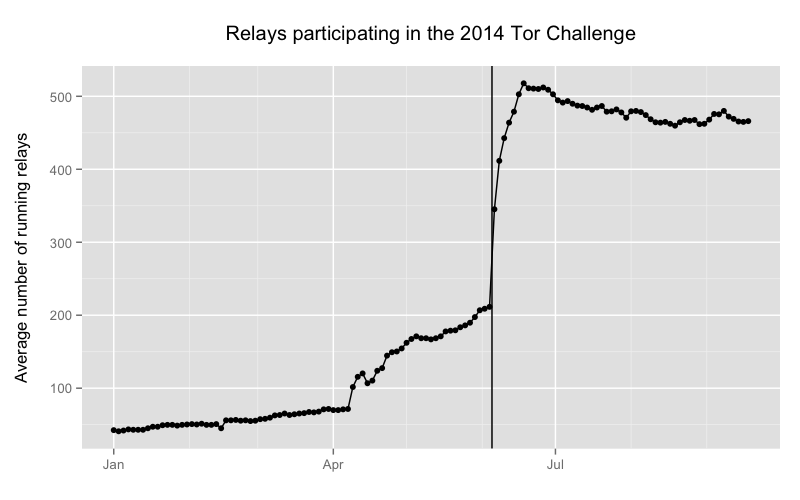 Good news for whistleblowers, journalists, and everyone who likes to browse the Internet with an added cloak of privacy: the Tor network got a little stronger. Tor—software that lets you mask your IP address—relies on an international network of committed volunteers to run relays to help mask traffic. And that network is stronger now, thanks to the 1,000+ volunteers who participated in our second-ever Tor Challenge.
Good news for whistleblowers, journalists, and everyone who likes to browse the Internet with an added cloak of privacy: the Tor network got a little stronger. Tor—software that lets you mask your IP address—relies on an international network of committed volunteers to run relays to help mask traffic. And that network is stronger now, thanks to the 1,000+ volunteers who participated in our second-ever Tor Challenge.
The goal of the Tor Challenge is simple: to improve the Tor network by inspiring people to run relays. These relays are the backbone of the Tor network; they're the machines that actually forward and anonymize Tor users' communications. We also see this Challenge as an opportunity to educate people about the value of Tor, address common misconceptions about Tor, and give technically oriented folks a concrete, somewhat measurable way of promoting freedom and privacy online.
This is the second time we’ve held this challenge, and the outpouring of support from the technical community far exceeded our hopes. When launching this campaign in June, we were hoping to surpass 549 participating relays—the total number of relays that took part in the challenge in 2011. And that was an ambitious number; 2011 was during the Arab Spring, and the EFF Tor Challenge was one small way that technologists could lend support to democratic activists who relied on Tor to organize and reach the larger Web. We hoped that this year we’d be able to inspire just as much participation.
The results far outstripped our hopes: we had nearly three times as many participating relays. That’s over 1,600 relays—either new or increased in bandwidth—helping to strengthen the Tor network.
Here’s a breakdown of the results:
| Tor Challenge 2011 | Tor Challenge 2014 | |
| Exit Relays | 123 | 326 |
| Middle Relays | 299 | 1203 |
| Bridges | 127 | 106 |
| Total Participating Relays | 549 | 1,635 |
One of the reasons this campaign was so successful was that we teamed up with three other organizations: the Free Software Foundation, Freedom of the Press Foundation, and the Tor Project. These organizations’ promotional efforts were key to the campaign’s success.
The other key? Over 1,000 individuals who cared enough to help contribute bandwidth to the Tor network. Our gratitude goes out to each of the participants. Thanks for making the Internet a little more private and a bit more resistant to censorship.
Special thanks to Dr. Karsten Loesing of the Tor Project for making these awesome graphs of the challenge.

